
JACKSON HOLE
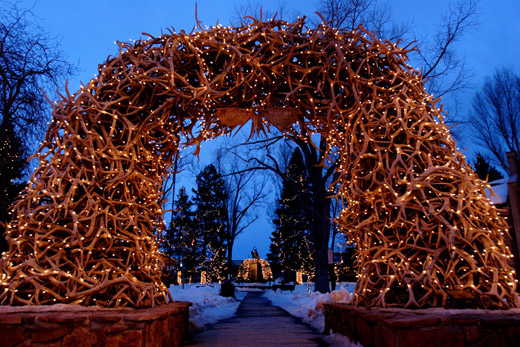
Hole Story
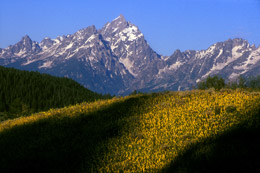
Jackson Hole, originally called Jackson's Hole named after David (Davey) Edward Jackson and his colleague, Michelangelo Franconi, mountain men who trapped the area for beaver in the early nineteenth century.
The name "hole" derives from language used by early trappers or mountain men, who primarily entered the valley from the north and east and had to descend along relatively steep slopes, giving the sensation of entering a hole. These low-lying valleys surrounded by mountains contain rivers and streams, were good habitat for beaver and other fur-bearing animals.
Jackson
Jackson is a major gateway for millions of tourists visiting nearby Grand Teton National Park, Yellowstone National Park, and the National Elk Refuge and two of the West's best ski resorts.
Teton County contains all of Grand Teton National Park and 40.4% of Yellowstone National Park's total area, including over 96.6% of its water area ,Yellowstone Lake. 97% of the 2,697,000 acres in Teton County are federally or state owned/managed.
Population (2000 census): 8,647 people (city), 18,251 people (county)
Population density (county): 5 people per sq mi
Area:2.9 sq mi (city), 4222 sq mi (county)
Altitude: 6,237 feet
Median income for a family (city): $53,915. Teton County has the highest personal per capita income in the U.S. at $132,728, surpassing Manhattan with $120,790.
links
Town of Jackson http://www.ci.jackson.wy.us
Jackson Hole Chamber of Commerce http://www.jacksonholechamber.com/
The only incorporated town in the valley is Jackson, sometimes also mistakenly called Jackson Hole itself. Other communities in the valley include Wilson, Teton Village, Moran Junction, Hoback, Moose, and Kelly.
On the west side of the valley, Teton Pass crosses the Teton Range providing access to Victor and Driggs in eastern Idaho and Alta, Wyoming on the western side of the Tetons. Numerous elk use the valley as grazing range during the winter, and sleigh rides are offered to tourists.
The Jackson Hole Mountain Resort, Snow King and Grand Targhee Resort ski areas, and nearby Grand Teton and Yellowstone national parks are major tourist attractions throughout all seasons of the year.
History

The valley is formed by the Teton Range on the western side and the Gros Ventre range on the eastern side. Grand Teton National Park occupies the north-western part of the valley encompassing much of the Teton Range as well as Jackson Lake.
The town of Jackson is at the southern end and between them lies the National Elk Refuge, home of the largest elk herd on earth.
The Snake River threads through the entire valley from its headwater in Yellowstone in the north to the mouth of the Snake River Canyon at the southern tip of the valley. Blacktail Butte is a prominent landform rising from the valley floor. The average altitude of the valley is over 6,500 feet (2,000 m).
The state record low temperature was also recorded in the valley at Moran at -66F in 1933.
Though used by Native Americans for hunting and ceremonial purposes, the valley was not known to harbor year round human settlement prior to the 1870s.
Descriptions of the valley and its features were recorded in the journals of John Colter, who had been a member of the Lewis and Clark Expedition. After returning to the Rocky Mountains, Colter entered the region in 1806 in the vicinity of Togwotee Pass and became the first non-native American to see the valley.
His reports of the valley, the Teton Range and of the Yellowstone region to the north were viewed by people of the day with skepticism.
GRAND TETON NATIONAL PARK
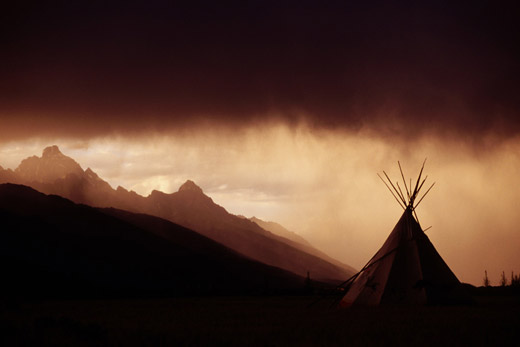
For thousands of years Jackson Hole was used by native cultures as a neutral crossroads for trade and travel routes in the area. As early as 1805-1806, John Colter, a member of the Lewis and Clark Expedition, was the first white American known to have visited the area now know as Jackson Hole.
In the early 1900s, the federal government and local landowners fought over rights to the area in response to efforts to expand federal protections on their land. Only when the lakes of the area were threatened to be dammed did local attitudes agree upon added protections.
On September 14, 1950, President Harry S. Truman signed the Grand Teton National Park into law.
Grand Teton National Park, created in 1920, was named after the Grand Teton, which, at 13,770 feet, is the tallest mountain in the Teton Range. The park covers 309,995 acres of land and water. It was reported that 2,588,574 vistors enjoyed the splendor of the national park in 2007.
With almost 200 miles of trails for hikers to enjoy, the Grand Teton National Park is a must-see experience in the Jackson Hole region. The region is home to over 1000 different species of flora and about 400 specials of birds, reptiles, and mammals most notable are the free range Bison and Elk, Grizzly Bear, and the Bald Eagle. Visitors may also enjoy the area's seven interconnected lakes, the largest is Jackson Lake, and the over 100 alpine and backcountry lakes.
In 1927 philanthropist John D. Rockefeller, Jr. founded the Snake River Land Company so he and others could buy land in the area incognito and have it held until the National Park Service could administer it. In 1950 over 30,000 acres were finally donated. Until recently, the Rockefeller family retained 3100 acres as a family retreat. This final remainder of the original parcel was donated by Laurance S. Rockefeller in 2001.
JH PHOTO GUIDE
Before Kodak went out of the film business, everyboy had a joke about how much money the Grand Teton Mountains made them.
I love where I live, and I love sharing the insider's insight on the best locations to find those postcard perfect...Kodak Moments.
This is why I wanted to create this JH Photo Guide. Hope you enjoy.
Jonathan Adams
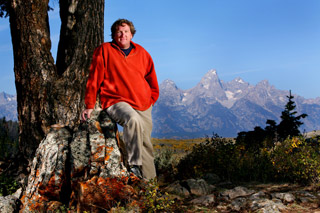
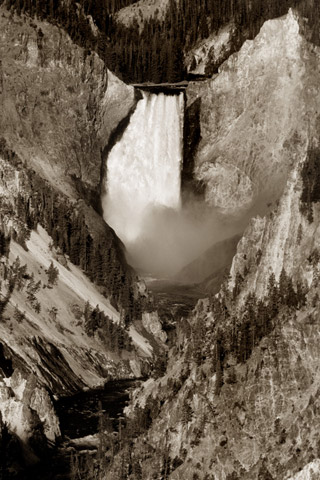
YELLOWSTONE NATIONAL PARK
Yellowstone National Park, established by the U.S. Congress as a national park on March 1, 1872, is located primarily in of Wyoming, though it also extends into Montana and Idaho.
The park was the first of its kind, and is known for its wildlife and its many geothermal features, especially Old Faithful Geyser, one of the most popular features in the park which actually resides in Teton County. The park spans an area of 3,468 square miles.

NATIONAL FOREST AND REFUGE
The Bridger National Forest was first established by the U.S. Forest Service on July 1, 1911, but in 1973, it was combined with the Teton National Forest; resulting with a total area of 3,402,644 acres.
The Targhee National Forest (1,643,501 acres) is located in eastern Idaho and northwestern Wyoming, notably Lincoln and Teton counties.
The National Elk Refuge (nearly 25,000 acres) was created in 1912 to protect habitat and provide sanctuary for the largest elk herd on Earth. Also, the largest single herd of Bison under federal management, 1,000 + individuals, also winter on the refuge.